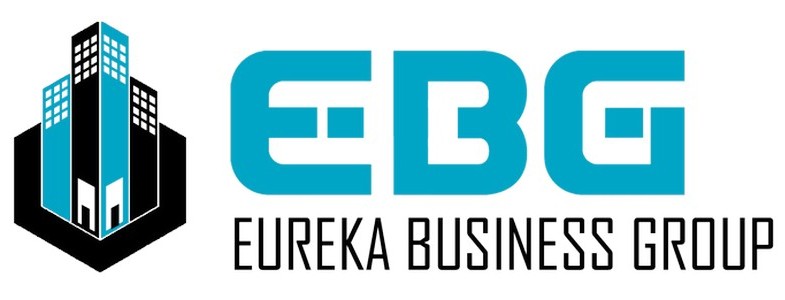6 Things Multifamily Owners Should Pay Special Attention In This Market
Everyone has been talking about the $230M multifamily portfolio that was foreclosed on by Arbor (a Fannie Mae DUS lender) in the past week.
The main talking points were pointed at syndication, education groups and such. Not many were talking about what can multifamily owners do today to avoid being in the same unfortunate position. So I thought I’d share some hard learned lessons from our own experience as owners, operators, syndicators and brokers of multifamily and other commercial real estate.
#1 The income-expense graph inversion
Every multifamily investor can tell you that NOI (Net Operating Income) is composed of Income less Operational Expenses. In the past 10+ years we’ve been living in a world where the rent growth graph has been growing at a rate of 5%, 10% and in some cases even 20% year over year while the expenses graph was growing at a normal inflation rate of 2%-3% per year. That means there was a positive difference between the two graphs which pushed NOIs higher year over year and created the multifamily merry-go-round where properties were bought and sold withing months(!) and everyone kept making money.
And then COVID happened…
All of the sudden, supply chains were stuck, causing material shortages. People found ways to work from home, which caused a huge labor shortage in the blue-collar jobs sector. The government was printing money like there’s no tomorrow, and everyone was spending money like there’s no tomorrow which pumped the economy with a lot of hot air until the end of 2022 when the balloon just popped. Now we have inflation rates ranging between 6% and 8% officially and much more unofficially. Chick-Fil-A is paying $19/hr and Walmart distribution centers are paying $24-$26/hr.
Why does it matter? Because the graph is now inverted! Expenses are growing at a much faster pace than rents, which in most of the country are going flat or worse.
What does it mean? It means that that a stabilized property is now on a down trend for the NOI!
So, the first thing multifamily owners should pay attention to is: The income-expense graph inversion
#2 Checks & Balances
Many Multifamily owners use 3rd party property management companies to run the day day-to-day operations of the properties. Unfortunately, many of these management companies have very little is any checks and balances systems to make sure everything is running as it should be. We’ve seen fees not being charged, fraud, embezzlement, unreported deposits, move-outs without final account statements, move-ins without deposits and many other issues that the lack of audit processes let through and hurt the property’s bottom line. Multifamily owners, specifically ones that don’t self-manage, should reach out to their 3rd party management teams and ask what checks and balances systems and processes they have in place to ensure that what they think is being done is actually done and done correctly. If you find the management team is lacking the required systems and processes, then you need to work with them to make sure these gaps are covered ASAP. Management teams that refuse to do so in a timely manner, should not be trusted with the care of your property…
#3 The Language In The Loan Documents
Not all loan documents are born equal, and every lender will have their own version. In fact, same lender, different loans can have significant differences because lenders (especially Fannie/Freddy DUS lenders) use a pool of agency approved attorneys and they have different format and different approach to the loan documents. The strength of the borrower’s attorney is also a factor in this.
All multifamily owners, regardless of the status of their property, should revisit the loan documents and refamiliarize themselves with the terms and conditions in it. What the lenders can ask/demand/force and take a note of these things. Multifamily owners should probably make a list of these things that would be considered technical defaults and work with their management team to review and make sure the properties are in compliance so the lenders won’t have any ammunition against you!
#4 The Cashflow Analysis
As mentioned above, many Multifamily owners choose to use a 3rd party property management company to run the day-to-day operations of the properties. As such, some owners choose to receive monthly reports and just glimpse over them, paying only attention to the bottom line. In today’s market, especially considering the income-expense graph inversion mentioned in the beginning of this article, paying attention to the cash-flow of the property is critical! Multifamily owners should prepare and/or review a cashflow analysis report that shows every dollar that came in and every dollar that was spent. Please note, this is not(!) the P&L report provided by the property management team (which in many cases is on an accrual basis). Every dollar that made it to the bank vs. every dollar that left the bank. Poor cashflow is the #1 cause for properties to get in trouble with the lenders. Poor cashflow also causes deferred maintenance and ironically, in a circular notion, deferring maintenance will allow incompetent managers to mask poor cashflow until a very late stage!
#5 Physical vs Economical Occupancy
There’s a fine line between “keeping it full” and high occupancy. Many Multifamily owners have a benchmark of occupancy for the management team which in some cases leads to “let’s not evict” and “give them another chance” mentality because the management company doesn’t want to show a drop in occupancy. Compensating a 3rd party property management company based on occupancy could incentivize the wrong behavior. Multifamily owner should regularly review the delinquency report and pay attention to how high the balances are compared to the monthly rent (e.g., if the unit rent is $800 and the outstanding balance is $2500 then that tenant didn’t pay rent for 3 consecutive months!). Most multifamily management software would also indicate next to every unit/tenant how many times they were late on payment in the past 12 months. Tracking this information on a regular basis will help Multifamily owners identify bad trends and allow them to take action sooner rather than later!
#6 Labor Costs
One of the large expenses, if not the largest one, is payroll. On-site managers, office team, maintenance techs, grounds, etc. are all hard to hire and retain in the post COVID world and the average salaries have increased by tens of percentages. Monitoring your labor costs closely can help identify inefficiencies, time theft (that’s a real thing!), abuse of overtime and over staffed teams. These items can prove to be massive money pits and put a real financial strain on the property!
As owners of multifamily ourselves, brokers, asset managers and special servicers for lenders we predict that many multifamily owners will find themselves in a corner that will be hard to get out of if they don’t pay closer attention to the details until we see an improvement in the market conditions and the income to expense graphs find their way to normalcy.
If you are a multifamily owner and need help with assessing the situation on a property or a portfolio, we can help with that. We can be as high level as reviewing reports and pointing out potential risks or we can be as thorough as spending time with your on-site team and reviewing the operations and financials of the property. Call me today (my number is on my profile) to discuss your needs and see if our service can bring value!


Joseph Gozlan,
Commercial Real Estate Advisor
- Email: Joseph@EBGTexas.com
- Office: (903) 600-0616
- Mobile: (469) 443-6336

